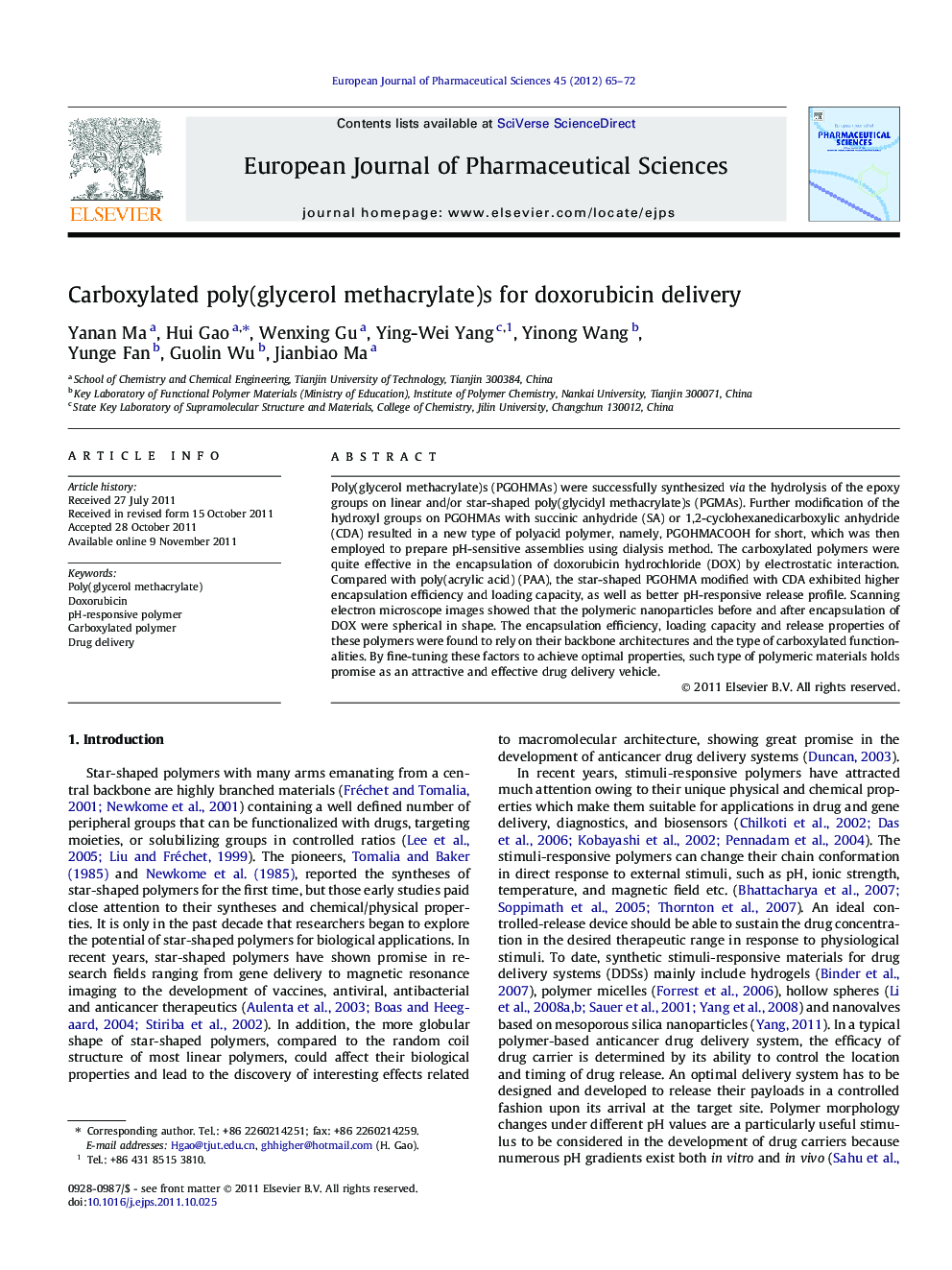| Article ID | Journal | Published Year | Pages | File Type |
|---|---|---|---|---|
| 2481090 | European Journal of Pharmaceutical Sciences | 2012 | 8 Pages |
Poly(glycerol methacrylate)s (PGOHMAs) were successfully synthesized via the hydrolysis of the epoxy groups on linear and/or star-shaped poly(glycidyl methacrylate)s (PGMAs). Further modification of the hydroxyl groups on PGOHMAs with succinic anhydride (SA) or 1,2-cyclohexanedicarboxylic anhydride (CDA) resulted in a new type of polyacid polymer, namely, PGOHMACOOH for short, which was then employed to prepare pH-sensitive assemblies using dialysis method. The carboxylated polymers were quite effective in the encapsulation of doxorubicin hydrochloride (DOX) by electrostatic interaction. Compared with poly(acrylic acid) (PAA), the star-shaped PGOHMA modified with CDA exhibited higher encapsulation efficiency and loading capacity, as well as better pH-responsive release profile. Scanning electron microscope images showed that the polymeric nanoparticles before and after encapsulation of DOX were spherical in shape. The encapsulation efficiency, loading capacity and release properties of these polymers were found to rely on their backbone architectures and the type of carboxylated functionalities. By fine-tuning these factors to achieve optimal properties, such type of polymeric materials holds promise as an attractive and effective drug delivery vehicle.
Graphical abstractFigure optionsDownload full-size imageDownload as PowerPoint slide
